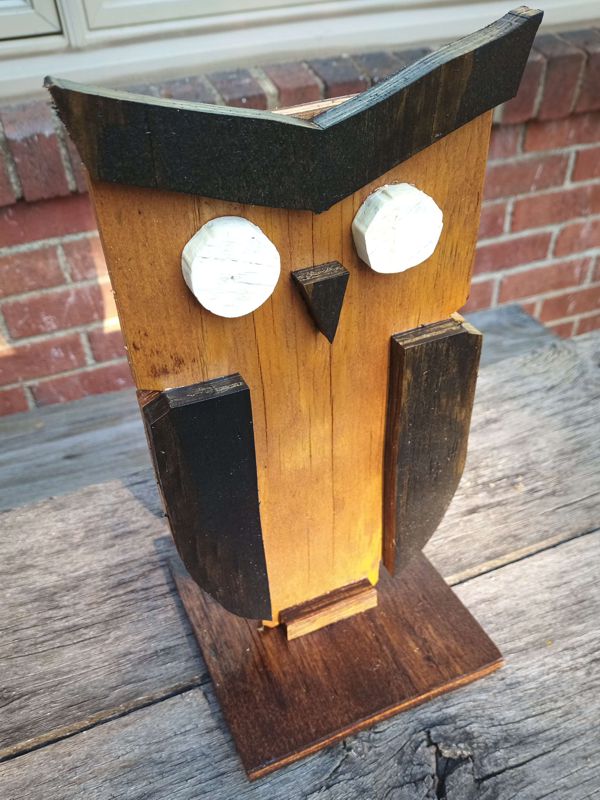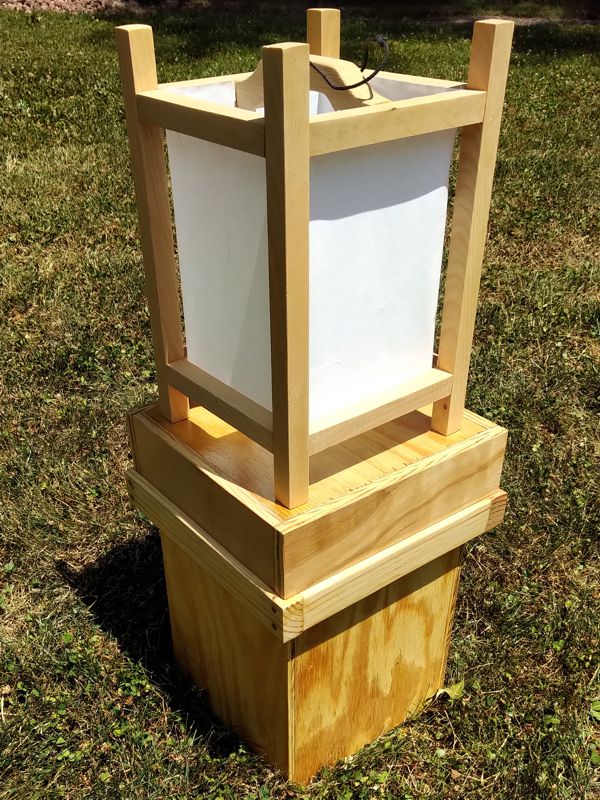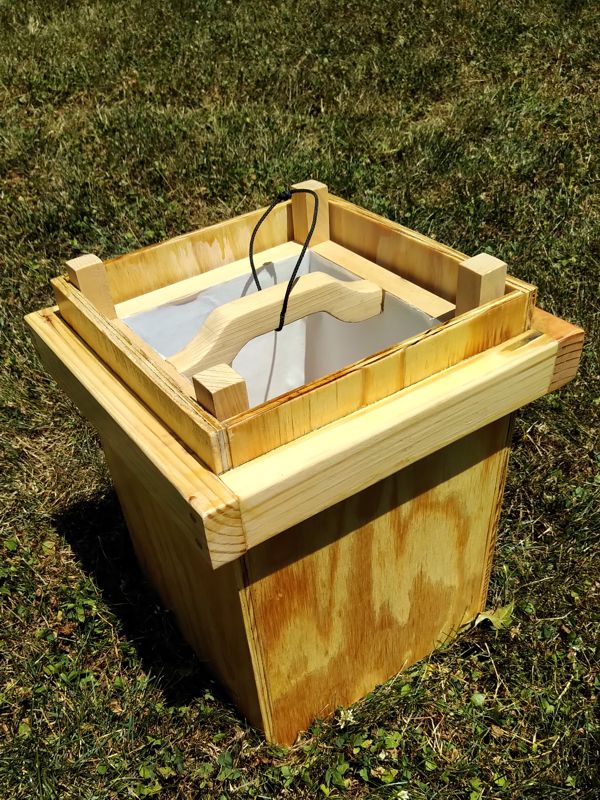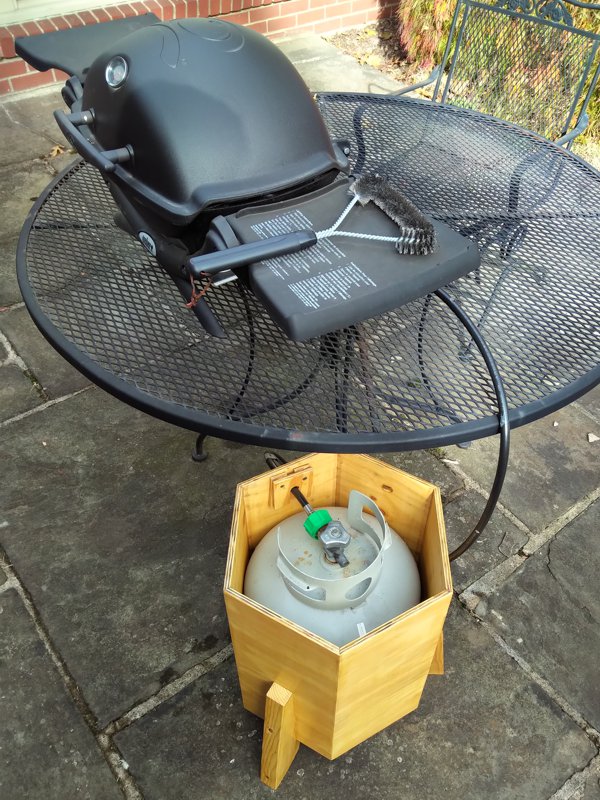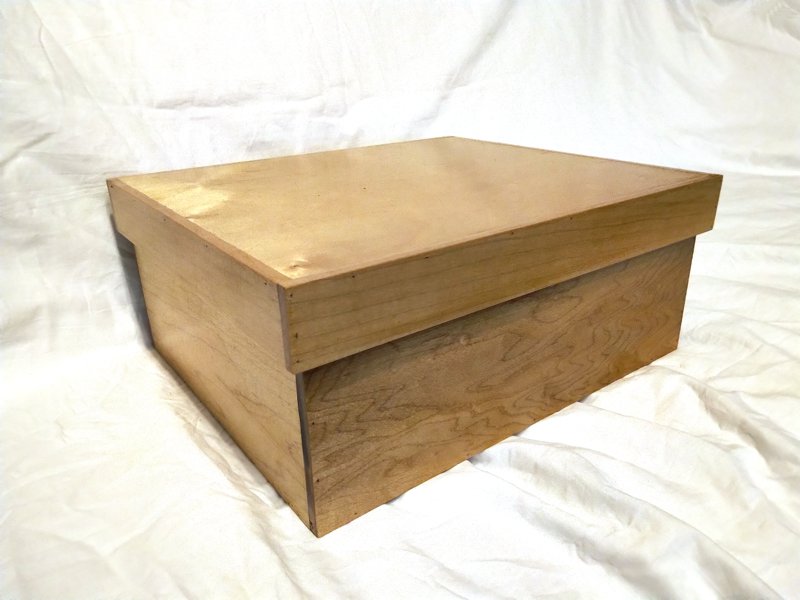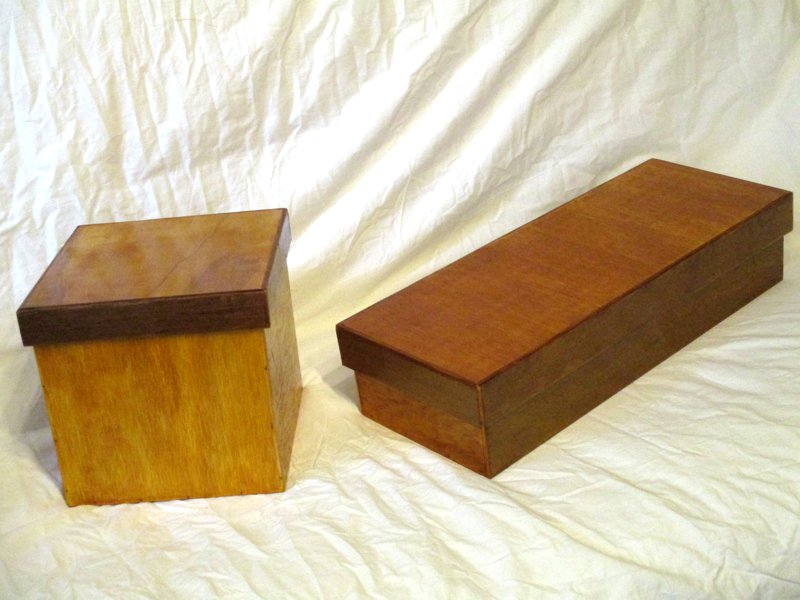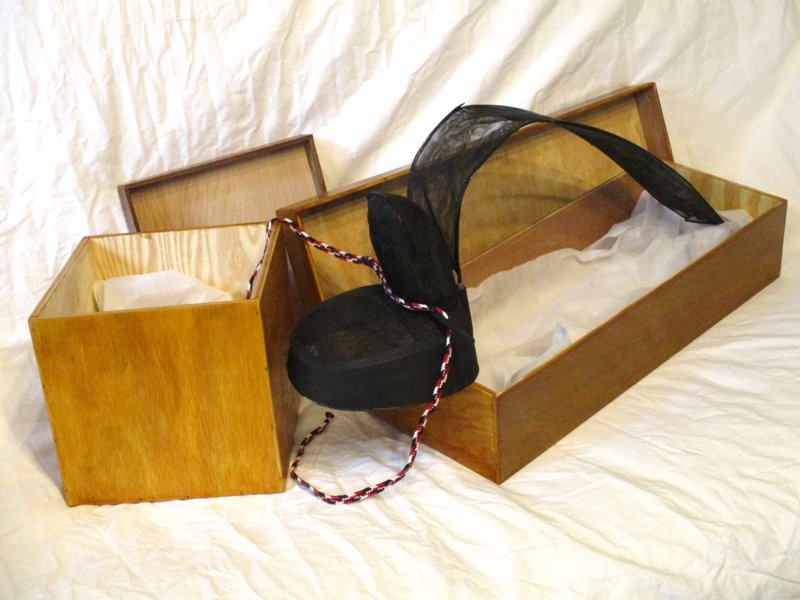Several years ago, I ordered something from the Lee Valley tool company and they included a sheet of gift wrapping paper with the order. On the inner surface of the paper were plans for a decorative owl you could make. I was looking through some stuff around the workbench the other day, and I found these plans. I’ve had some surplus half-inch thick pressure-treated plywood sitting around, and been wondering what to do with it. So, these two thoughts clicked together and I decided to get that round TUIT spinning.
After using the band saw to cut out the pieces according to the pattern, I sanded the pieces to remove the fuzzy edges, then applied some oil-based stains that I have sitting on the shelf, and some white paint. Next, I glued the pieces in place and put in some 23 gauge headless pins to add a little mechanical stability, especially at the base where it’s an edge-to-surface butt joint. The next day, I sprayed it with a couple of coats of polyurethane, and that was pretty much it.
This is more of a craft project than a serious woodworking project, but it was a fun way to spend a few hours in the shop. Not everything has to be serious. My wife thinks it is cute, but it doesn’t really keep the doves off the patio. I’m hoping it might keep them from flying up into the windows, though.
Except for the band saw and the spray finish, this would be a good project if you are trying to keep a handful of youths busy for a while. Some of the smaller and rounder parts are a pain to cut, but it’s not precision work, so you can kind of fudge it. The gluing and painting could be done by anybody of any age and skill level. If things come out a little crooked that just adds character. The only vital joinery is where the base attaches to the owl.
If I make another one, I might use the router to round over the front edges of each piece to give it a slightly softer look. I like the way the stain gives the parts definition, and cover up the greenish hue of the plywood, without covering up all of the the grain and making it just look like plastic. I’ll have to see if there is enough surplus for one or two.

